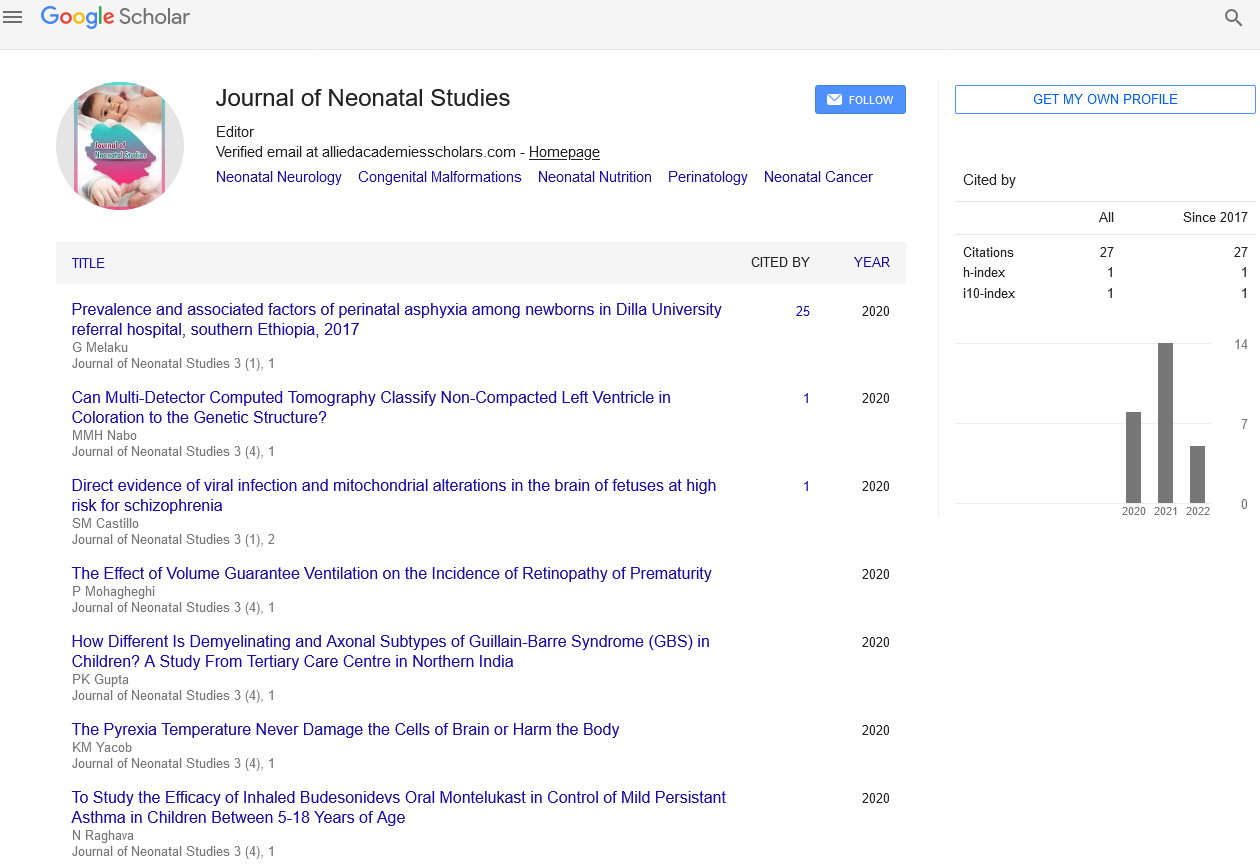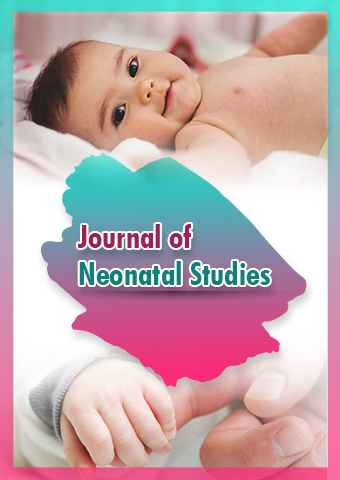Perspective - Journal of Neonatal Studies (2024) Volume 7, Issue 4
Understanding the Pharmacokinetics (PK) and Pharmacodynamics (PD) of Drugs in Neonates
- Corresponding Author:
- Mandangi Pavan Kalyan
Department of Pharmacology, VJS College of Pharmacy, Andhara University, India
E-mail: neonnevergiveup1619@gmail.com
Received: 03-Jul-2024, Manuscript No. JNS-24-150523; Editor assigned: 05-Jul-2024, PreQC No. JNS-24-150523 (PQ); Reviewed: 19-Jul-2024, QC No. JNS-24-150523; Revised: 20-Aug-2024, Manuscript No. JNS-24-150523 (R); Published: 27-Aug-2024, DOI: 10.37532/JNS.2024.7(4).251-252
Introduction
Pharmacokinetics (PK) refers to the study of how the body absorbs, distributes, metabolizes, and excretes drugs. It involves understanding the time course of drug concentrations in the body and how these concentrations change over time. Pharmacodynamics (PD), on the other hand, refers to the study of the biochemical and physiological effects of drugs on the body and the mechanisms of their action. PD focuses on the relationship between drug concentrations at the site of action and the resulting therapeutic or toxic effects.
Description
Absorption
Drug absorption in neonates is influenced by several factors, including gastric pH, gastric emptying time, and the presence of intestinal enzymes and transporters. These factors differ significantly from those in older children and adults, leading to unique absorption patterns.
Gastric pH: At birth, neonates have a higher gastric pH (more alkaline) due to low acid secretion. This can affect the solubility and stability of orally administered drugs, altering their absorption.
Gastric emptying time: Neonates have delayed gastric emptying, which can prolong the time drugs spend in the stomach and affect the rate and extent of absorption.
Intestinal enzymes and transporters: The activity of intestinal enzymes and transporters is immature in neonates, impacting the metabolism and transport of drugs across the intestinal wall.
Distribution
The distribution of drugs in neonates is influenced by body composition, protein binding, and tissue permeability. These factors can lead to differences in the Volume of distribution (Vd) and the concentration of drugs at their sites of action.
Body composition: Neonates have a higher percentage of total body water and lower body fat compared to older children and adults. This affects the distribution of hydrophilic (water-soluble) and lipophilic (fat-soluble) drugs. Hydrophilic drugs tend to have a larger Vd in neonates, while lipophilic drugs may have a smaller Vd.
Protein binding: Plasma protein levels, such as albumin and alpha-1 acid glycoprotein, are lower in neonates. This results in a higher free (unbound) fraction of drugs, which can enhance their pharmacological effects but also increase the risk of toxicity.
Tissue permeability: The Blood-Brain Barrier (BBB) is more permeable in neonates, allowing drugs to more easily cross into the central nervous system. This can lead to higher drug concentrations in the brain and potential central nervous system effects.
Metabolism
Drug metabolism in neonates is primarily carried out by the liver, with the involvement of various Cytochrome P450 (CYP) enzymes, as well as phase II enzymes such as UDP-Glucuronosyltransferases (UGTs) and Sulfotransferases (SULTs). The activity of these enzymes is significantly lower in neonates compared to adults, affecting the metabolism of drugs.
Cytochrome P450 enzymes: The activity of CYP enzymes, such as CYP3A4 and CYP2D6, is reduced in neonates, leading to slower metabolism of drugs that are substrates for these enzymes. This can result in prolonged drug half-lives and increased risk of accumulation and toxicity.
Phase II enzymes: The activity of phase II enzymes, responsible for conjugation reactions such as glucuronidation and sulfation, is also lower in neonates. This can affect the clearance of drugs and their metabolites, leading to altered pharmacokinetics.
Ontogeny of enzyme expression: The expression of drug-metabolizing enzymes changes with age, with significant variability observed between preterm and term neonates. Understanding the ontogeny of enzyme expression is essential for optimizing drug dosing in this population.
Excretion
Renal excretion is the primary route of elimination for many drugs and their metabolites. In neonates, renal function is immature, impacting the clearance of drugs.
Glomerular Filtration Rate (GFR): GFR is significantly lower in neonates compared to older children and adults. This results in reduced clearance of drugs that are primarily eliminated by glomerular filtration, such as aminoglycosides.
Tubular secretion and reabsorption: The processes of tubular secretion and reabsorption are also immature in neonates, further affecting renal drug clearance.
Maturation of renal function: Renal function matures rapidly in the first few weeks and months of life, leading to changes in drug clearance and the need for dose adjustments.
Pharmacodynamics
The pharmacodynamics of drugs in neonates are influenced by their immature organ systems, receptor sensitivity, and developmental changes in drug targets.
Immature organ systems: The immaturity of organ systems, such as the cardiovascular, respiratory, and central nervous systems, can affect the pharmacological response to drugs. For example, neonates may have different cardiovascular responses to vasoactive drugs compared to adults.
Receptor sensitivity: The sensitivity of drug receptors and ion channels can differ in neonates, leading to variations in drug efficacy and toxicity. For example, neonates may have increased sensitivity to opioids and benzodiazepines, resulting in pronounced central nervous system effects.
Developmental changes: As neonates grow and develop, changes in receptor expression, signal transduction pathways, and other drug targets can influence pharmacodynamic responses.
Implications for clinical practice
Understanding the pharmacokinetics and pharmacodynamics of drugs in neonates is essential for optimizing drug therapy and improving outcomes in this population. Key considerations for clinical practice include:
Dose selection: Dose selection should be based on the unique pharmacokinetic and pharmacodynamic characteristics of neonates, taking into account factors such as gestational age, postnatal age, weight, and organ function.
Conclusion
The pharmacokinetics and pharmacodynamics of drugs in neonates are influenced by unique physiological characteristics that require specialized consideration in clinical practice. Understanding these differences is essential for optimizing drug therapy, ensuring safety, and achieving therapeutic success in this vulnerable population. Ongoing research and advancements in neonatal pharmacology will continue to enhance our ability to provide effective and individualized care for neonates.

